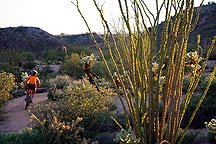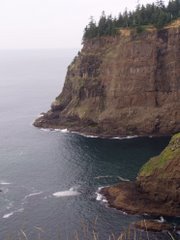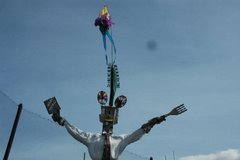 You can read more about the protracted history of establishing light rail in Seattle here. Now back to the light rail line, and the fun stuff.
You can read more about the protracted history of establishing light rail in Seattle here. Now back to the light rail line, and the fun stuff.
This new light rail system is possibly the most complicated one in the entire United States. Perhaps the most interesting component of this system is how it interacts with a regional bus system that's already in place and cutting-edge with the use of hybrid busses.
When the light rail hits downtown Seattle's tunnel system, which was originally built 20 years ago, it turns into an interesting shared situation with busses...an article from the Seattle Times describes that whole thing:
 When light-rail service begins July 18, the trains will take turns with buses inside the Downtown Seattle Transit Tunnel.
When light-rail service begins July 18, the trains will take turns with buses inside the Downtown Seattle Transit Tunnel.
Two-car trains began test runs there Wednesday, at the same time King County Metro Transit buses carried regular passengers. That milestone makes it the only joint bus-rail tunnel in the United States, except for one in Pittsburgh that doesn't have stations.
Transit staff face a challenge to keep all that traffic flowing.
Already, an average 1,080 buses and 54,800 riders come and go daily in the 1.3-mile tunnel. Now, add a train every 7 ½ minutes to the 55 or so buses that arrive in a peak hour.
 Signals warn a bus driver not to approach a station platform until the train ahead has departed. Between trains, buses will often enter close together, like a caravan.
Signals warn a bus driver not to approach a station platform until the train ahead has departed. Between trains, buses will often enter close together, like a caravan.
"You can have up to six buses on the platform at the same time," said Keith Sherry, a rail operations chief.
Managers predict some backups — when a train forces buses to pause, or when someone in a wheelchair boards a bus — but say the flow should smooth out within minutes. Still, Metro is adding time to the schedule, so a bus that used to take eight minutes to travel the length of the tunnel is now expected to need nine minutes at peak times.
Buses and trains both will stop at the International District station as well as the three beneath downtown — Pioneer Square, University Street and Westlake Center. Buses also stop at Convention Place.
The tunnel gates, which now are rolled shut at 7 p.m., will stay open late. Some light-rail fans think it will be safer and more pleasant to be in the tunnel than on the street, especially at night. That alone could attract new riders, they hope.
 "People will take light rail to a sports event, they'll take light rail to concerts and plays, they'll take light rail to Seattle Center with their kids. They won't have to wait at some dark bus stop downtown," said Julia Patterson, a transit-board member from SeaTac.
"People will take light rail to a sports event, they'll take light rail to concerts and plays, they'll take light rail to Seattle Center with their kids. They won't have to wait at some dark bus stop downtown," said Julia Patterson, a transit-board member from SeaTac.
Before opening in 1990, the $460 million tunnel was envisioned to serve rail someday. Tracks were even laid but were inadequately insulated and were replaced in an $87 million retrofit from 2005-2007. Contractors also lowered the concrete roadway to make boarding platforms level with newer trains and buses.
In case of a sudden shutdown — as happened last week when an alarm tripped by mistake — trains could still operate from Tukwila to the station near Safeco and Qwest fields using a switch south of the tunnel.
The tunnel remains part of the downtown free-ride zone for buses, but train passengers must pay at least the $1.75 adult base fare, even for short hops.
Mike Lindblom: 206-515-5631 or mlindblom@seattletimes.com
 What a day...light rail opened today in Seattle to applause, rave reviews, and much fanfare.
What a day...light rail opened today in Seattle to applause, rave reviews, and much fanfare. 




















